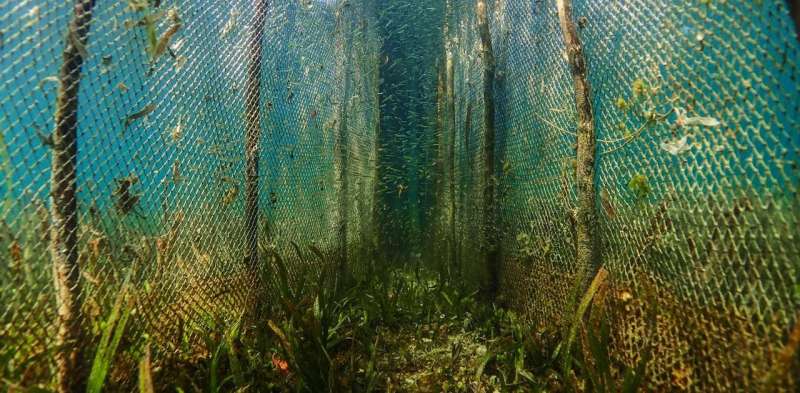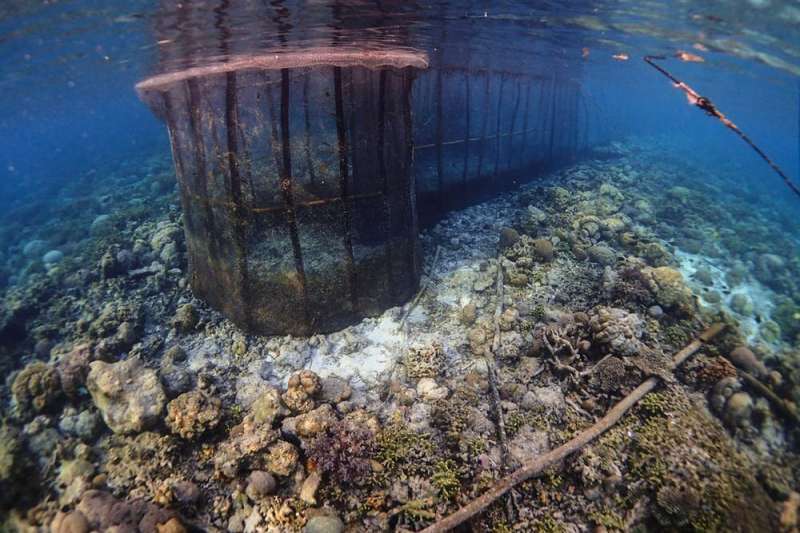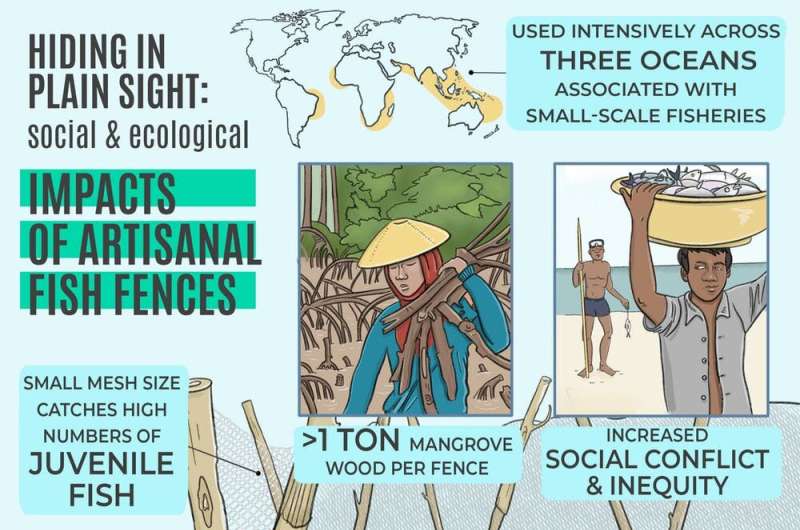Small-scale fisheries have unintended consequences on tropical marine ecosystems

Hundreds of millions of people in some of the world's poorest countries are supported by small scale fisheries. These are usually self-employed fishers who use relatively simple methods, primarily to feed the local community and generate income. Though the impact of one small fishery may seem negligible, collectively they catch millions of tonnes per year, from some of the most biodiverse and threatened ecosystems on the planet.
Managing these tropical fisheries should be a conservation priority as we strive for sustainability and try to protect fragile marine ecosystems in a changing climate. However, this management shouldn't just be a question of how many fish are caught, or the type of fish – as is mostly the case. Understanding the impacts of how they are caught is arguably just as important.
One kilo of fish can be caught in a variety of ways, from a variety of places at a variety of times. Fisheries regulations often focus on limiting total catch or numbers of fishers, managing single species, or restricting individual fishing methods. But for overall biodiversity and ecosystem health, the intensity and impact of fishing methods that target multiple species needs much more attention.
Just like the carbon footprint of human activities, the footprint of otherwise comparable fish catches varies significantly between different fishing techniques. For example, bottom trawling has more of a physical impact on the sea bed than line fishing.
In our new paper, published in Nature Communications, we argue that to truly appreciate the impact of a single fishing technique, a multidisciplinary approach is needed. This should include the technique's direct ecological effects, such as damage to habitat, as well as the species composition of catches. And it should also extend to its social impacts within the broader fishing community, such as whether it leads to inequities or social conflict.

Fish fences
To test this footprint approach, we chose to look at artisanal fish fences. These fences are semi-permanent structures, positioned close to shore, sometimes several hundred metres in length and visible from space. As fish move to deeper water at low tide, they are funnelled into the fence and trapped. They are widely used across the Atlantic, Pacific and Indian oceans, and have received almost no research or conservation attention to date.
At first glance, they seem harmless and unremarkable. Yet the more we studied them, the more significant their footprint proved to be. During a 15-year case study in the Wakatobi National Park, Indonesia, we recorded over 500 individual species of fish being caught. A high proportion of these were caught as juveniles, before they had the chance to reproduce.
Built in shallow coastal habitats, mostly seagrass meadows, owners often clear the seagrass and coral from around their fences. They also construct their fences using mangrove wood, with an average fence requiring more than one ton of wood. This makes fish fences one of the only examples of a fishing technique directly damaging three different marine ecosystems.
Access to tropical coastal fishing grounds is often open to all. But fish fences close off areas, giving the owners unregulated and unofficial private access. This creates social conflict among the wider fishing community. And while they require a high initial investment, little regular effort is needed thereafter. This unique investment combination encourages fence owners to continue using them regardless of catch success and potential bycatch, exacerbating the problems of overfishing.

Conservation middle ground
Fishing can be sustainable. In fact, seagrass meadows, mangroves and coral reefs can support incredibly productive fisheries. Complete bans on fishing often displaces food and livelihood demands elsewhere, almost certainly involving environmental impacts of their own. But a shift in focus towards minimising catch footprints supports the basic principle of maximum catch for minimal cost.
Of course, we mustn't ignore the fact that climate change and rising sea levels threaten the future of all these ecosystems regardless of fishing. But local management targeting the most disproportionately damaging fishing practices could buy valuable breathing space.
Improving the management of fish fences provides an ideal starting point. They are so widely used, and their impacts so broad and significant, that restricting their use would likely have immediate and far reaching benefits. Their large size also makes them easy to detect and monitor, making them a low effort but high reward conservation strategy. But we have to move quickly—every year that fish fences continue to be used so intensively used brings us one step closer to the point of no return.
Journal information: Nature Communications
Provided by The Conversation
This article is republished from The Conversation under a Creative Commons license. Read the original article.![]()

















